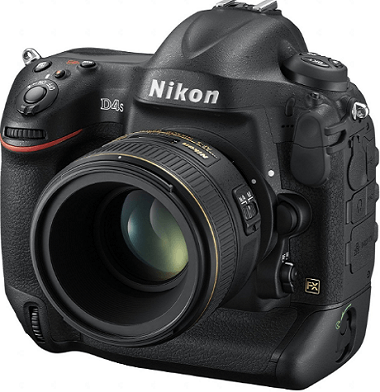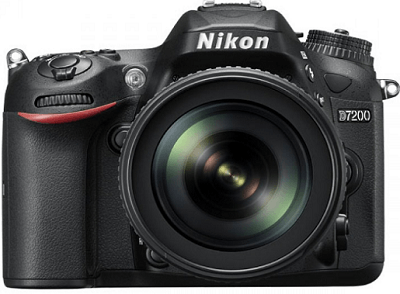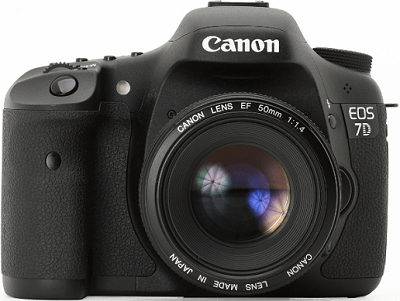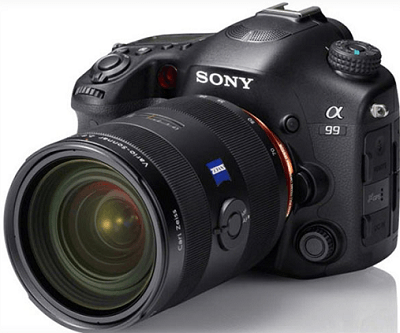Humanity was always capturing precious moments to review later. The best companies in the market supply Cameras for Photographers and videographers for shootings. In that Canon and Nikon are the best we choose. In these companies, you can expect entry-level cameras to come with APS-C sensors. These are ten times faster than the standard lens cameras. Here is the list of top DSLR Cameras
All DSLR cameras come with a digital single lens reflex; choose wisely any DSLR camera with a friendly budget. Choosing the best DSLR camera that is budget-friendly is not an easy task. So, we have compiled the top 5 best DSLR cameras for videographers, photographers, and people passionate about DSLR cameras.
Nikon D810
Nikon finally introduced a new updated body after the Nikon D800 and D800E.
It has a 36.6 MP resolution, improved Camera Features like an FX-format CMOS sensor, an EXPEED 4 image processor, and a 3.2” 1,299k dot LED monitor.
It can quickly shoot professional-quality videos and has a Nikon MB D-12 multi-power battery backup.
This camera is optimized for video recording in FX and DX formats, recording 60p recorder for external outputs.
The maximum number of images per sequence is now improved to 9,999.
Nikon D810 uses both media slots, Compact Flash, and memory cards.
A larger grip enables the extended shooting, and a secondary “i” button is added to the back panel for changing quick settings.
Full HD capture for 1080p video capture in 60p, 30p, and 24 frames per second.
Nikon D4s
The key features of Nikon D4S are 16.2 megapixel FX Full-frame CMOS sensor image quality at 4928 x 3280 pixels, 14 bits/color raw mode.
It can record video up to 1920 x 1080 pixels 60 fps in MPEG format. The maximum clip size at the highest quality is 10 minutes.
The burst rate of Nikon D4S is 200 short at 11fps, Raw 60 fast at 11fps, and 55 shorts at 11fps in TIFF.
The ISO range is usually 100 m- 25,600, but it can be extendable up to 50 – 409,600.
It comes with a rechargeable battery EN- EL18a Li-ion 3,020 shorts when using the optical viewfinder.
It gives the live view of single shot Phase detection AF with an immoral interrupting view.
It can store files in .storage TIFF, CompactFlash, JPEG, and RAW+JPEG files.
It comes with a better-controlled grip when it can handle different weather conditions.
Nikon D720
This 24.1 MP CMOS image sensor, EXPEED 3 image processing system, gives high-quality images with low noise.
It allows images with extreme sharpness and detail view because it is designed without optical low pass filters.
D720 features a 3.2” full high-resolution 1,299-dot LED monitor, which gives a crisp image format live view shooting a detailed picture of menu adjustments.
1.3 x crop option allows 51 autofocus points, enabling almost equivalent focal lengths and faster image processing.
It comes with built-in HRD, Built-in i-TTL flashlight, and Speedlight compatibility. It allows comprehensive angle range flash coverage.
Nikon D720 has dual SD memory card slots and different screen modes.
It allows different types of playback photos, movie playback, Histogram display, GPS data display, and auto image rotation.
Canon EOS 7D
The key features of Canon EOS 7D are an 18-megapixel camera with a CMOS sensor, 19 19-point AF system, and excellent low-light performance.
All buttons and controls can be customized for personal operations; it gives 8fps on continuous shooting.
It gives nearly 100% coverage with a liquid crystal overview and a new intelligent viewfinder.
It has a built-in dual-axis electronic level featuring a solid build and weather-sealing grip.
One of the fantastic features is wireless connectivity with the help of a new WFT ESA wireless transmitter.
Canon EOS 7D comes with 3 inches LED panel of 920,000-pixel clarity.
Rechargeable battery Li PL E6 and built-in pop-up flash.
Sony Alpha A99
The entire frame 42.4 megapixel CMOS sensor delivers incredible edge-to-edge details and sharp-edge video clarity.
It shoots up to 12 fps, allowing you to capture fast action movies with AF and AE tracking.
It captures up to 4K resolution, including 30p, 24p, and 120, which are smooth, cinematic, and Full HD mode views.
It has built-in WIFI to share your videos and photos through social media instantly.
It gives an OLED electronic Tru-Finder that allows you to check the brightness, high resolution, and 2359 K dots for superb resolution.
S-Gamut, S-log shooting will allow you to make more expensive movies and perform color grading in post-production.
Conclusion
For people who are looking to buy a budget-friendly and best DSLR camera, this is the Ultimate guide for them. We have compiled the top 5 DSLR cameras for videographers, Photographers, and mad about DSLR camera people.
Top 5 DSLR Cameras For Videographers: FAQs
What Makes the Nikon D850 a Top Choice Among DSLRs?
The Nikon D850 is renowned for its 45.7MP full-frame sensor, high dynamic range, long battery life, and rugged construction, making it a favorite for professionals.
Why Is the Canon EOS 6D Mark II Recommended for Enthusiasts?
It combines full-frame performance with user-friendly controls and durable weather sealing, offering a strong upgrade path for hobbyists and creators.
What Are the Advantages of the Canon EOS 90D?
The EOS 90D features a 32.5MP APS-C sensor, fast autofocus with face and eye detection, and 4K video recording, making it ideal for hybrid photo-video users.
Is the Canon Rebel SL3 Good for Beginners?
Yes, it’s compact, easy to use, offers an articulated touchscreen, and delivers great image quality—perfect for first-time DSLR users.
Why Is the Nikon D7500 Considered a Good Value?
The D7500 balances performance and affordability with its 20.9MP sensor, 4K video capabilities, and solid ergonomics—ideal for enthusiast shooters.
Are DSLRs Still Worth Buying in the Mirrorless Era?
Yes, for users who prefer optical viewfinders, extensive battery life, and established lens ecosystems, DSLRs remain a compelling option.
Which DSLR Is Best for Wildlife or Sports Photography?
The Nikon D850 stands out with its fast burst rate, wide autofocus coverage, and large buffer—suitable for capturing fast-moving subjects.
Do Any of These DSLRs Offer 4K Video Recording?
Yes, models like the Nikon D850, Canon EOS 90D, Canon Rebel SL3, and Nikon D7500 all support 4K video with varying levels of control.
Which DSLR Has the Longest Battery Life?
The Nikon D850 offers exceptional battery performance, capable of capturing over 1,800 shots on a single charge under optimal conditions.
What’s the Difference Between Full-Frame and APS-C DSLRs?
Full-frame DSLRs provide better low-light performance and depth of field control, while APS-C cameras are typically more compact and affordable.
Which DSLR Offers the Best Autofocus for Portrait Photography?
The Canon EOS 90D delivers reliable face and eye detection autofocus, making it an excellent choice for portrait and people photography.
Are Any of These Cameras Weather-Sealed?
Yes, cameras like the Nikon D850, Canon EOS 6D Mark II, Canon 90D, and Nikon D7500 include weather-resistant seals for outdoor use.
Is the Canon 6D Mark II Suitable for Travel Photography?
Yes, it combines full-frame image quality with a relatively lightweight build, making it a good option for travel shooters who want versatility.
Which DSLR Offers the Best Value for Money?
The Nikon D7500 is highly regarded for its price-to-performance ratio, offering pro-level features at a mid-tier cost.
Is the Nikon D3500 Still a Viable Entry-Level DSLR?
While not in the top five, the D3500 remains an excellent starter camera with intuitive controls and solid image quality.
Do These DSLRs Include Live View Mode?
Yes, all models support Live View, allowing users to compose shots using the rear LCD screen—especially helpful for video and stills.
Are These Cameras Good for Professional Work?
Yes, particularly the Nikon D850 and Canon EOS 6D Mark II, which meet the demands of professional photographers in multiple genres.
Can I Use Older Lenses with These DSLRs?
Yes, most models support a wide range of legacy lenses via native mounts or adapters, offering versatility for budget or creative needs.
What Are the Key Factors to Consider When Choosing a DSLR?
Key factors include sensor size, resolution, autofocus performance, video capabilities, lens availability, and your intended use case.
Are DSLRs Being Phased Out in Favor of Mirrorless Cameras?
While mirrorless is growing fast, DSLRs continue to be supported and remain relevant for many users who prefer their optical viewfinders and handling.










